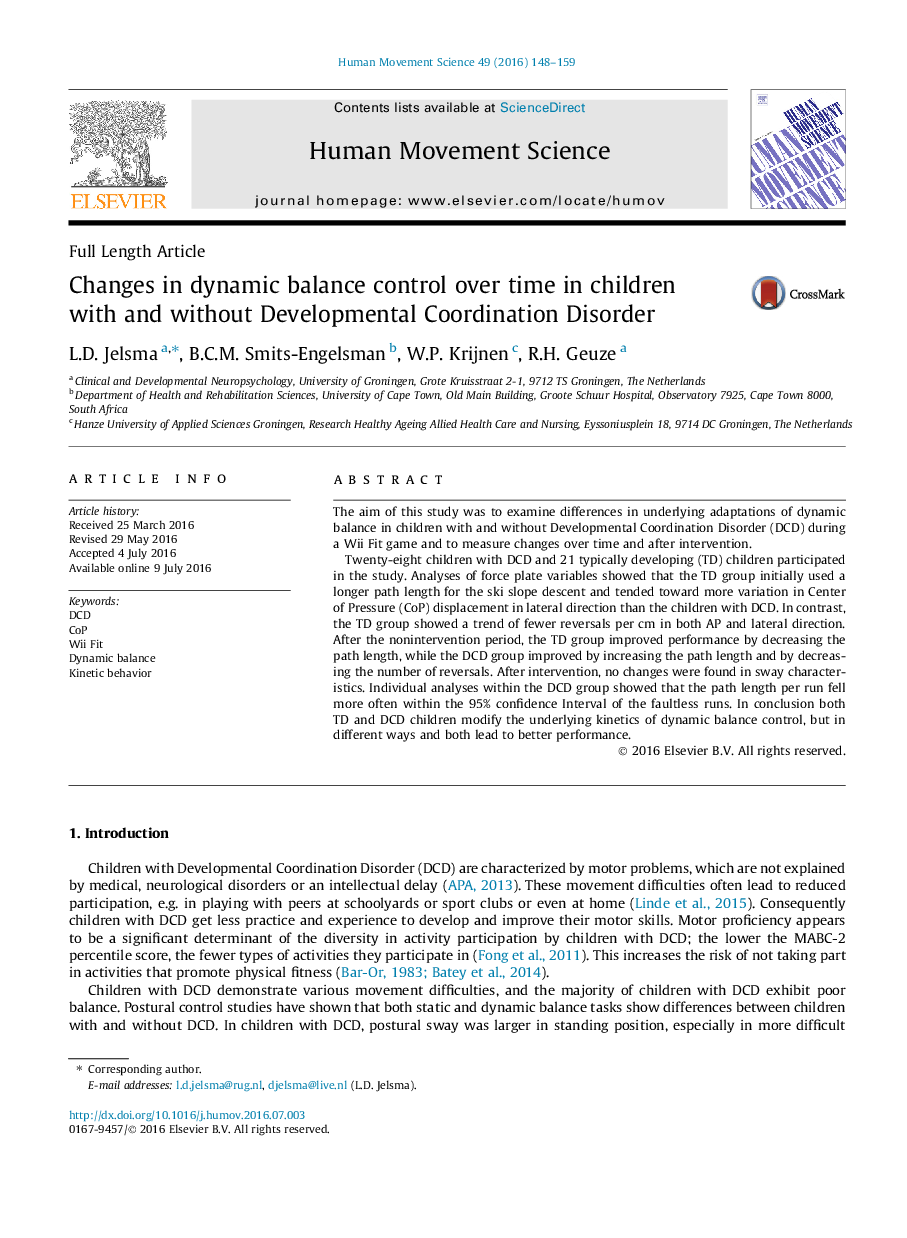| Article ID | Journal | Published Year | Pages | File Type |
|---|---|---|---|---|
| 7291246 | Human Movement Science | 2016 | 12 Pages |
Abstract
Twenty-eight children with DCD and 21 typically developing (TD) children participated in the study. Analyses of force plate variables showed that the TD group initially used a longer path length for the ski slope descent and tended toward more variation in Center of Pressure (CoP) displacement in lateral direction than the children with DCD. In contrast, the TD group showed a trend of fewer reversals per cm in both AP and lateral direction. After the nonintervention period, the TD group improved performance by decreasing the path length, while the DCD group improved by increasing the path length and by decreasing the number of reversals. After intervention, no changes were found in sway characteristics. Individual analyses within the DCD group showed that the path length per run fell more often within the 95% confidence Interval of the faultless runs. In conclusion both TD and DCD children modify the underlying kinetics of dynamic balance control, but in different ways and both lead to better performance.
Related Topics
Life Sciences
Neuroscience
Cognitive Neuroscience
Authors
L.D. Jelsma, B.C.M. Smits-Engelsman, W.P. Krijnen, R.H. Geuze,
